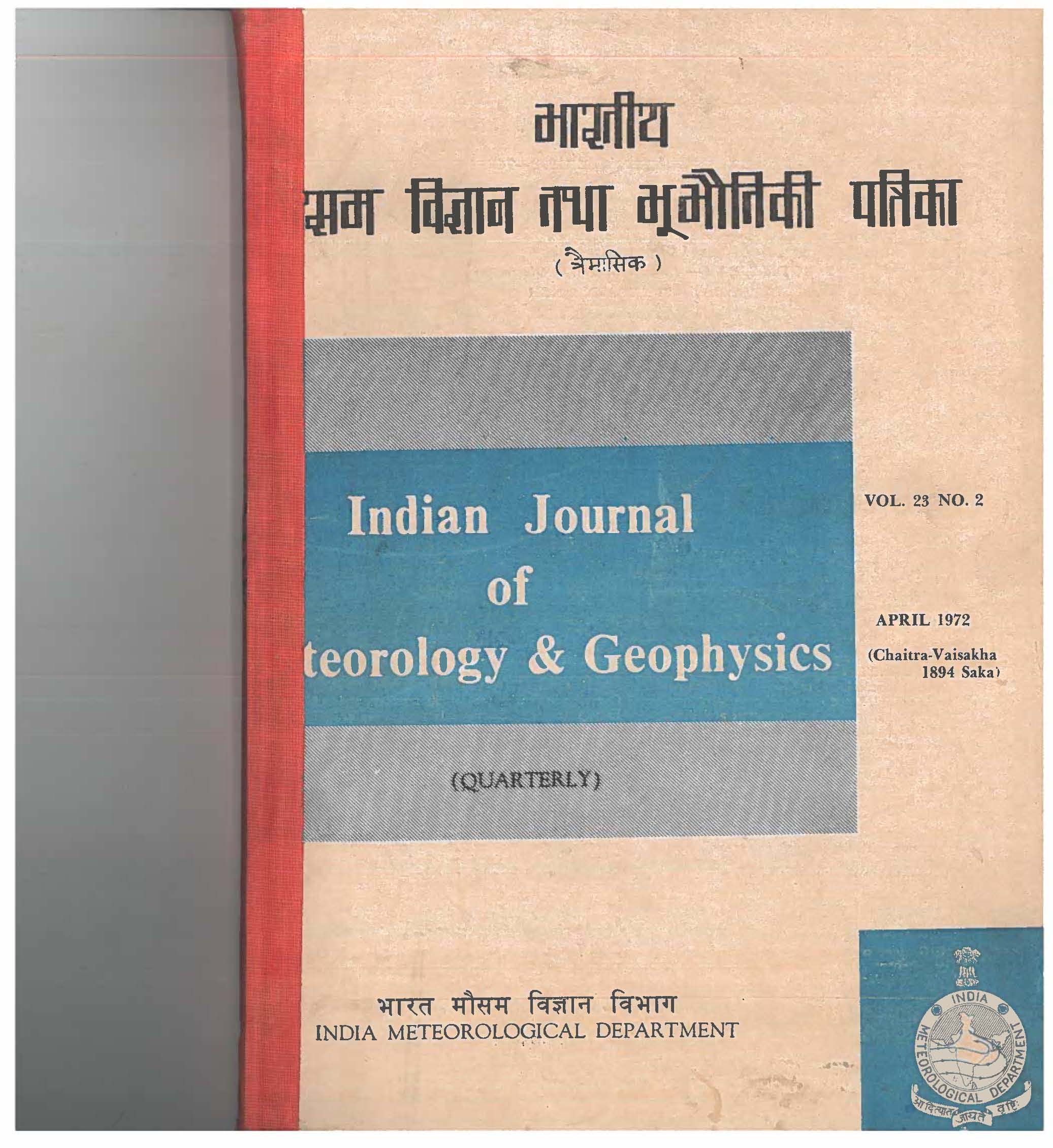The unsaturated downdraught
DOI:
https://doi.org/10.54302/mausam.v23i2.5268Abstract
The basic element in the phenomenon of the "humidity dip" observed and analyzed by the U.S. Thunderstorm Project is an unsaturated downdraught. As observed, the phenomenon is rather paradoxical since it is at the epoch of the heaviest thunderstorm rainfall that the surface relative humidity at a station decreases from near saturation to values as low as 60 or 70 per cent. Physically, since the surface rainfall is determined by the rate of downward transport of water, the factors contributory to an intense rainfall will be (i) a strong downdraught, (ii) high liquid-water content in the downflowing air, (iii) low evaporation in the downdraught, and (iv) high terminal velocity of drops, the last factors needing large drops. The first of these factors lends to a high rate of adiabatic compression of the downcoming air and allows less time for the. drops to evaporate into it. On the other hand, the large drops, only a small number of which. can lead to a high liquid-water content, are comparatively inefficient in providing water vapour to the downflowing air, the net result being that the downdraught reaching ground is unsaturated.
The physical picture envisaged above necessitates a radical departure from the pseudo-adiabatic form of the thermodynamic equation.. The difference between the resulting new equation and the classical pseudoadiabatic form is examined by assuming a steady state and computing the resulting distribution of temperature and humidity in the downdraught for different raindrop sizes. It is found that the larger the sizes of the drops into which the liquid water is dispersed and the stronger the down draughts, the less is the humidity and higher the temperature lapse in the downdraught, the limit being set by dry-adiabatic conditions.
Downloads
Published
How to Cite
Issue
Section
License
Copyright (c) 2022 MAUSAM

This work is licensed under a Creative Commons Attribution-NonCommercial 4.0 International License.
All articles published by MAUSAM are licensed under the Creative Commons Attribution 4.0 International License. This permits anyone.
Anyone is free:
- To Share - to copy, distribute and transmit the work
- To Remix - to adapt the work.
Under the following conditions:
- Share - copy and redistribute the material in any medium or format
- Adapt - remix, transform, and build upon the material for any purpose, even
commercially.



